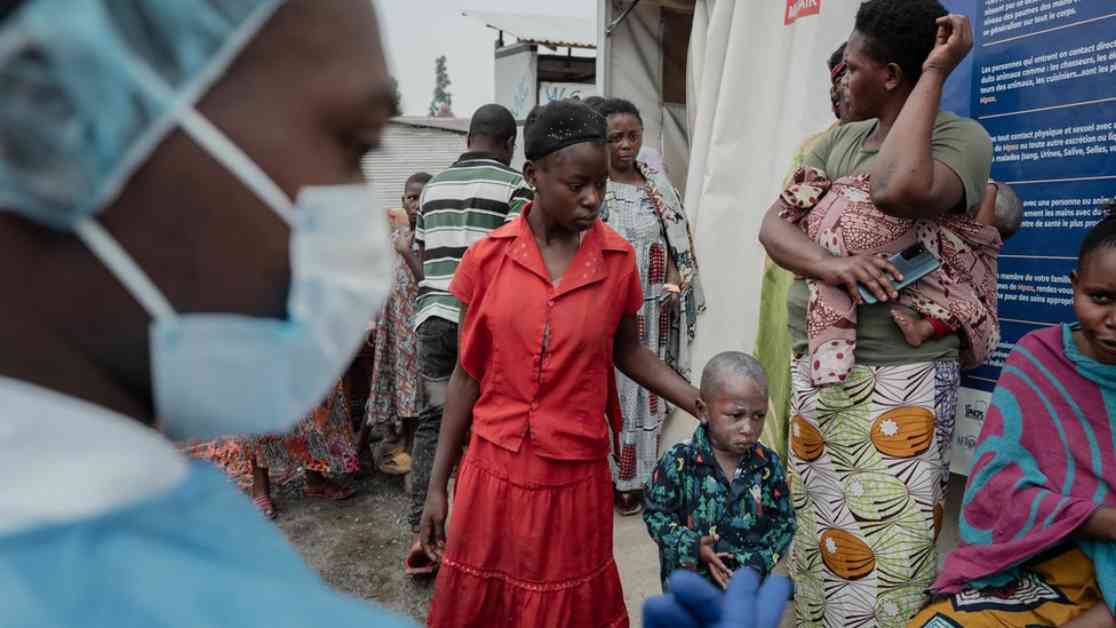The World Health Organization (WHO) declared on August 14th that the Mpox outbreak in certain regions of Africa constitutes an “international public health emergency of concern.” This marks the second time since 2022 that the WHO has issued the highest level alert for this highly infectious disease. Currently, Mpox has caused at least 450 deaths in the Democratic Republic of the Congo. Experts are concerned that many individuals who were infected last year have contracted the newer and more severe Ib variant strain, which may be more easily transmissible, leading to more severe disease outcomes.
High-risk Groups and Symptoms:
Individuals with weakened immune systems, such as infants who have not been vaccinated with the smallpox vaccine discontinued over 40 years ago, are at a higher risk of contracting the disease. Mpox, caused by a virus in the same family as smallpox, typically has milder consequences. Symptoms include fever, headache, swelling, back pain, and muscle aches. Patients may develop a rash after fever, starting on the face and spreading to other parts of the body, commonly affecting the palms and soles of the feet. The rash may be very itchy or painful, evolving through different stages before scabbing, peeling, and potentially leaving scars. The duration of Mpox infection is typically 14 to 21 days and can resolve on its own, but in certain cases, it can be fatal, especially among high-risk groups such as infants.
Spread and Affected Countries:
Mpox is most commonly found in remote villages in West and Central Africa’s tropical rainforests, including countries like the Democratic Republic of the Congo, where the disease has been present for many years. Thousands of individuals are infected annually in these regions, with hundreds dying from the disease, and children under 15 are the most severely affected. While outbreaks have primarily occurred in the Congo and its neighboring countries, recent cases of Mpox have also been reported in countries like Burundi, Rwanda, Uganda, and Kenya that have historically not experienced outbreaks. The Mpox virus has two main branches, with the first branch (clade I) being more severe than the second branch (clade II). The first branch has sporadically caused outbreaks in the Congo for decades and is currently spreading. Certain forms of the first branch virus seem to have a more significant impact on children than adults. Many individuals infected last year have contracted the newer and more severe Ib variant strain, which experts believe is more easily transmissible, leading to more severe disease outcomes.
Current Situation and Response:
The Africa Centers for Disease Control and Prevention (CDC) reported over 14,500 Mpox infection cases and 450 deaths from the beginning of 2024 to the end of July. Compared to the same period in 2023, there has been a 160% increase in infections and a 19% increase in deaths. The WHO last declared a public health emergency of concern for Mpox in 2022 when the outbreak was caused by the relatively mild second branch (clade II) virus, which spread to nearly 100 countries, including Europe and Asia, and was controlled through vaccination of high-risk groups.
Transmission and High-Risk Groups:
Mpox can be transmitted through close contact between individuals, including sexual activity, skin contact, and close conversation or breathing with an infected person. The virus can enter the body through damaged skin, the respiratory tract, or the eyes, nose, or mouth. Contact with virus-contaminated objects like bedding, clothing, and towels, or close contact with infected animals like monkeys, rats, and squirrels can also lead to transmission. During the global Mpox epidemic in 2022, the virus primarily spread through sexual contact. The current outbreak in the Congo is caused by sexual contact and other forms of close contact. This virus has also been found in other high-risk groups, including infants.
Prevention and Vaccination:
Authorities recommend avoiding close contact with Mpox patients and washing hands with soap and water if the virus is present in the community. Patients should self-isolate until all lesions disappear. The WHO advises using condoms as a preventive measure for sexual activity within 12 weeks of recovery. While there is a Mpox vaccine available, it is typically administered to high-risk individuals or those who have had close contact with infected individuals. Concerns exist about the lack of funding to provide vaccines to all those in need. The WHO recently requested drug manufacturers to provide Mpox vaccines for emergency use, even if these vaccines have not yet received official approval.
Global Response and Future Outlook:
The Africa CDC has declared a public health emergency in Africa, calling for better coordination of response measures among national governments and increased medical supplies and aid to affected areas. If global action is not taken, the epidemic could spread beyond the African continent. It is essential for countries to work together to prevent further spread and protect vulnerable populations.
In conclusion, Mpox poses a significant threat to public health, particularly in Africa’s high-risk groups. Understanding the spread of the disease and implementing effective prevention and vaccination strategies are crucial in controlling the outbreak and preventing further fatalities. Collaboration between governments, health organizations, and communities is essential to combat Mpox and safeguard public health.












